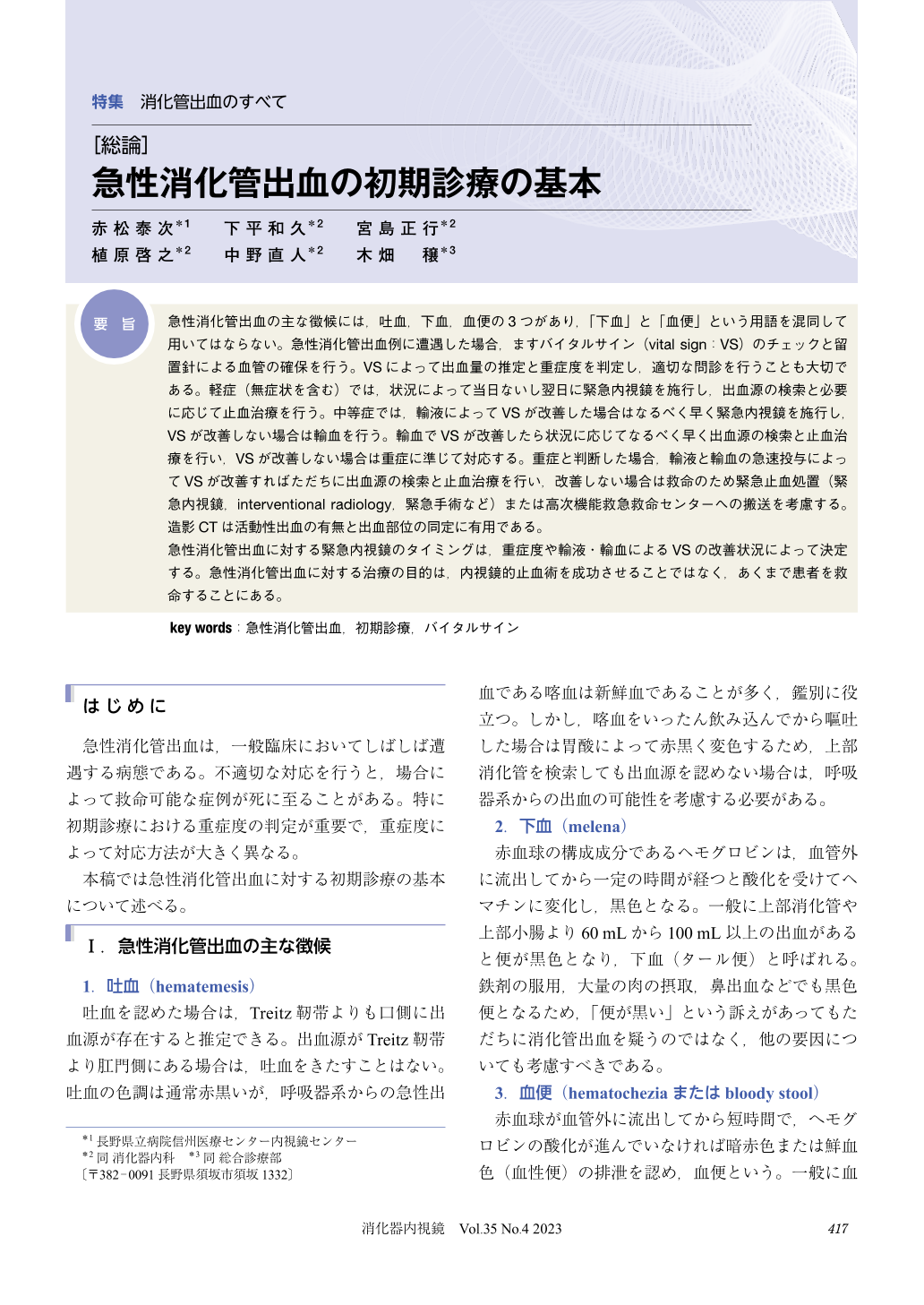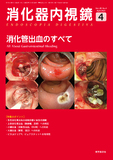Japanese
English
- 有料閲覧
- Abstract 文献概要
- 1ページ目 Look Inside
- 参考文献 Reference
- サイト内被引用 Cited by
要旨
急性消化管出血の主な徴候には,吐血,下血,血便の3つがあり,「下血」と「血便」という用語を混同して用いてはならない。急性消化管出血例に遭遇した場合,ますバイタルサイン(vital sign:VS)のチェックと留置針による血管の確保を行う。VSによって出血量の推定と重症度を判定し,適切な問診を行うことも大切である。軽症(無症状を含む)では,状況によって当日ないし翌日に緊急内視鏡を施行し,出血源の検索と必要に応じて止血治療を行う。中等症では,輸液によってVSが改善した場合はなるべく早く緊急内視鏡を施行し,VSが改善しない場合は輸血を行う。輸血でVSが改善したら状況に応じてなるべく早く出血源の検索と止血治療を行い,VSが改善しない場合は重症に準じて対応する。重症と判断した場合,輸液と輸血の急速投与によってVSが改善すればただちに出血源の検索と止血治療を行い,改善しない場合は救命のため緊急止血処置(緊急内視鏡,interventional radiology,緊急手術など)または高次機能救急救命センターへの搬送を考慮する。造影CTは活動性出血の有無と出血部位の同定に有用である。
急性消化管出血に対する緊急内視鏡のタイミングは,重症度や輸液・輸血によるVSの改善状況によって決定する。急性消化管出血に対する治療の目的は,内視鏡的止血術を成功させることではなく,あくまで患者を救命することにある。
Hematemesis, melena, and hematochezia are three major symptoms of acute gastrointestinal bleeding (AGIB). Some medical staff members confuse “melena” with “hematochezia” ; however, we should identify them correctly. When we encounter patients with AGIB, we should first examine their vital signs (VS) and administer an intravenous drip injection using an indwelling needle. After that, the extent of serious AGIB symptoms should be assessed as mild (including normal), medium, or severe based on vital signs and conducting an adequate medical interview is essential. According to the degree of serious symptoms of AGIB and the patient’s response to an injection and/or blood transfusion, we should determine the best time to identify the cause of AGIB and treat it if necessary. CT examination with a contrast medium is useful for determining whether active bleeding is taking place, and for finding the bleeding point.
The purpose of treatment for AGIB is not just stopping the bleeding using endoscopy, but saving the lives of patients with AGIB.

© tokyo-igakusha.co.jp. All right reserved.


